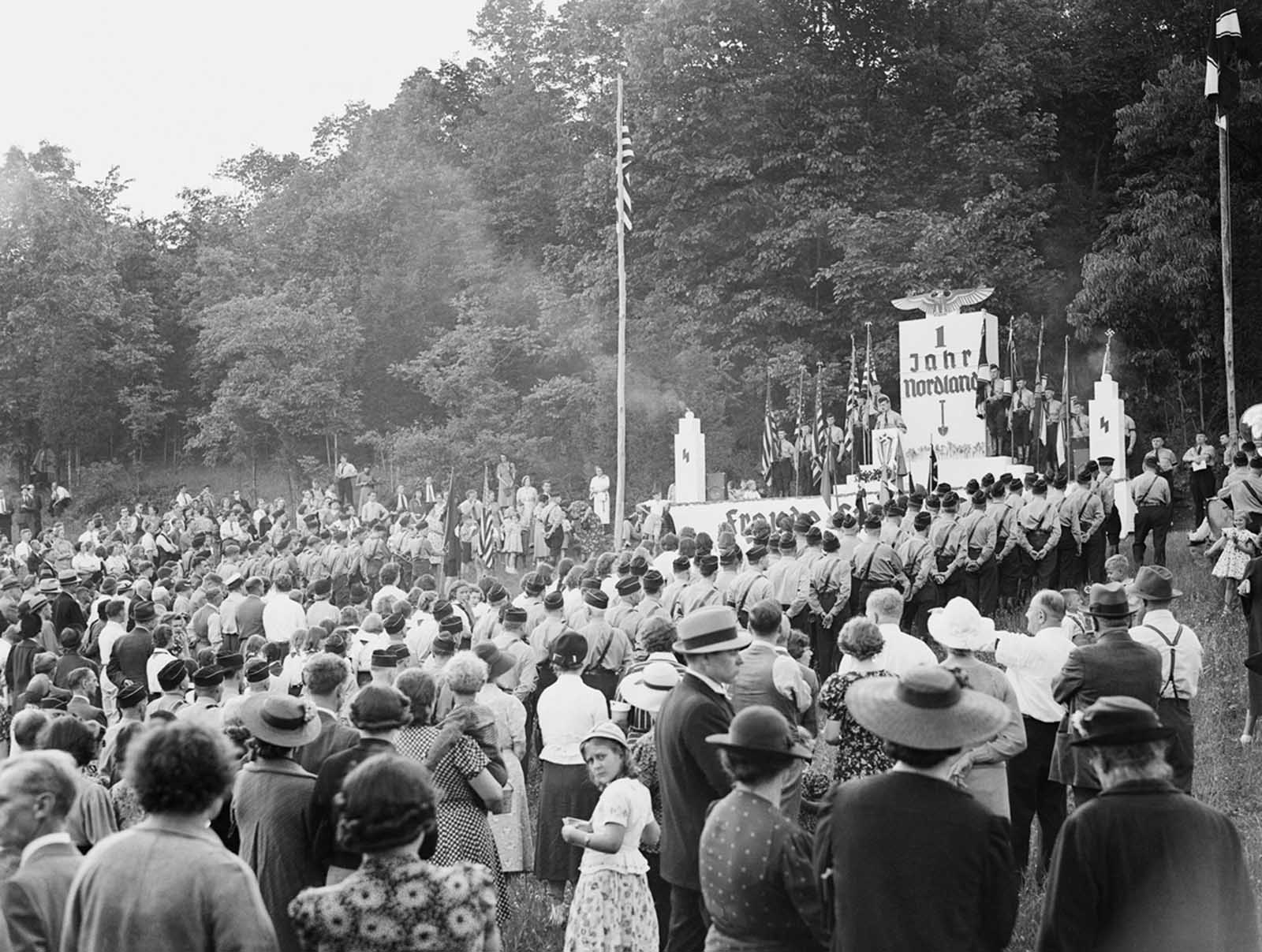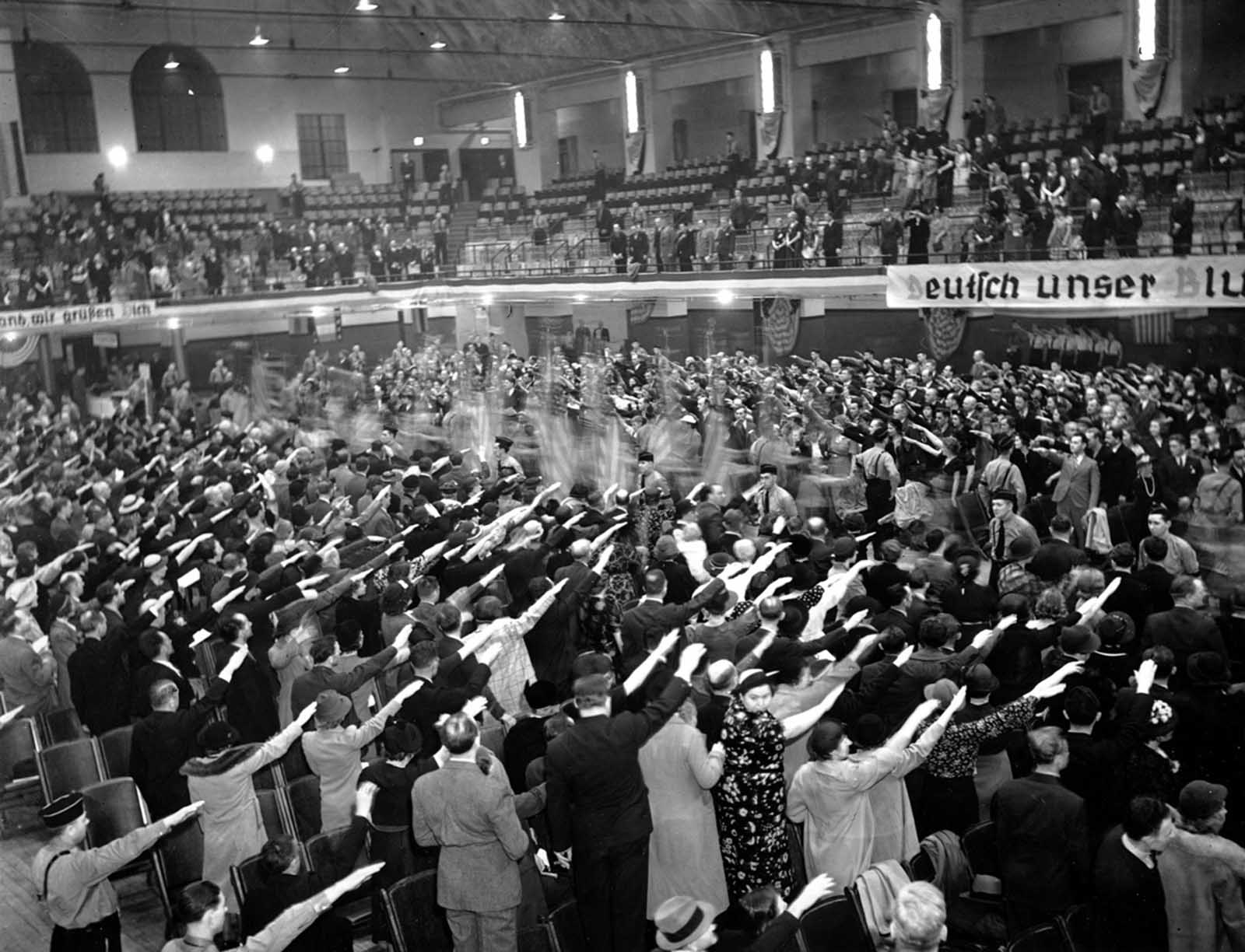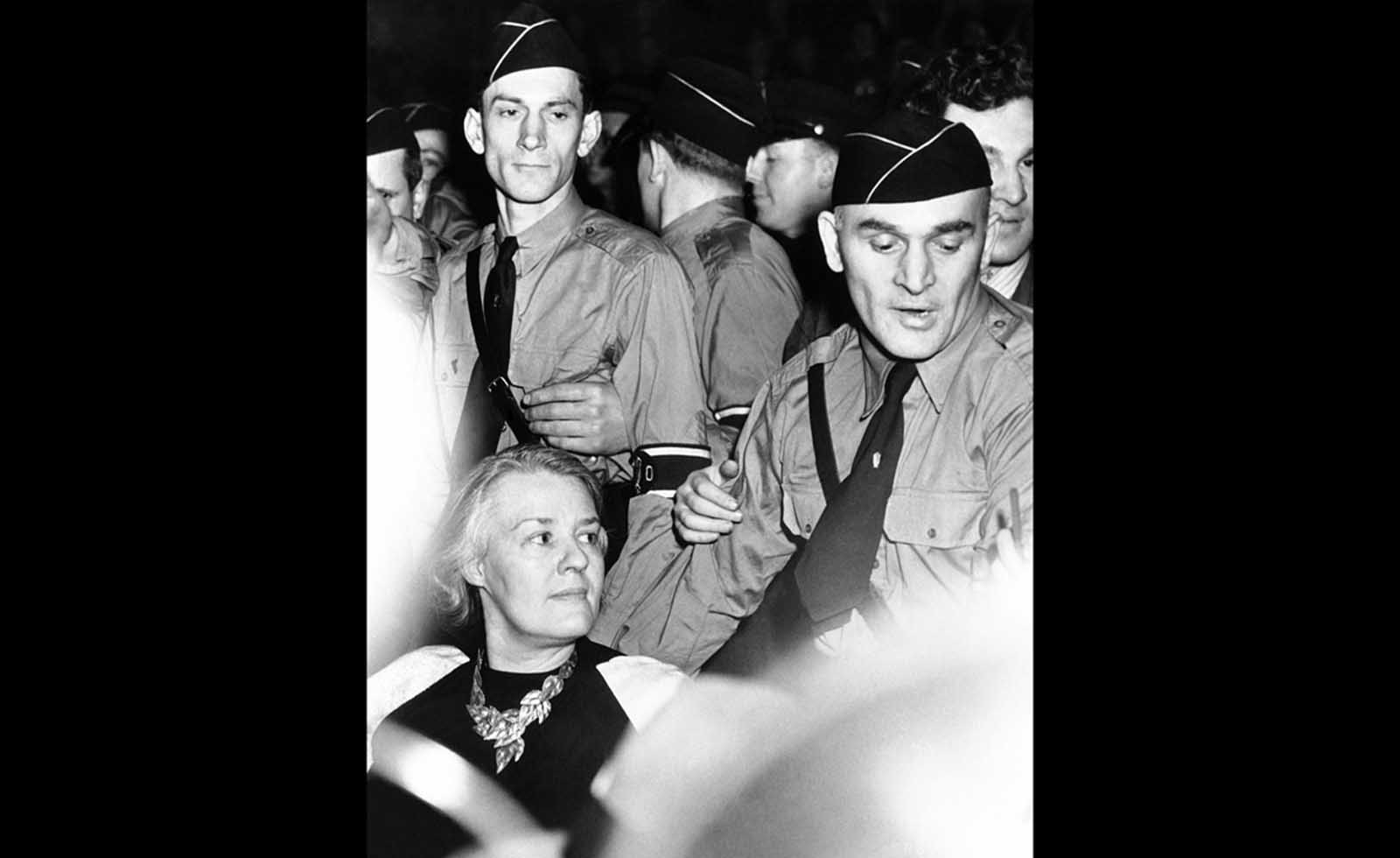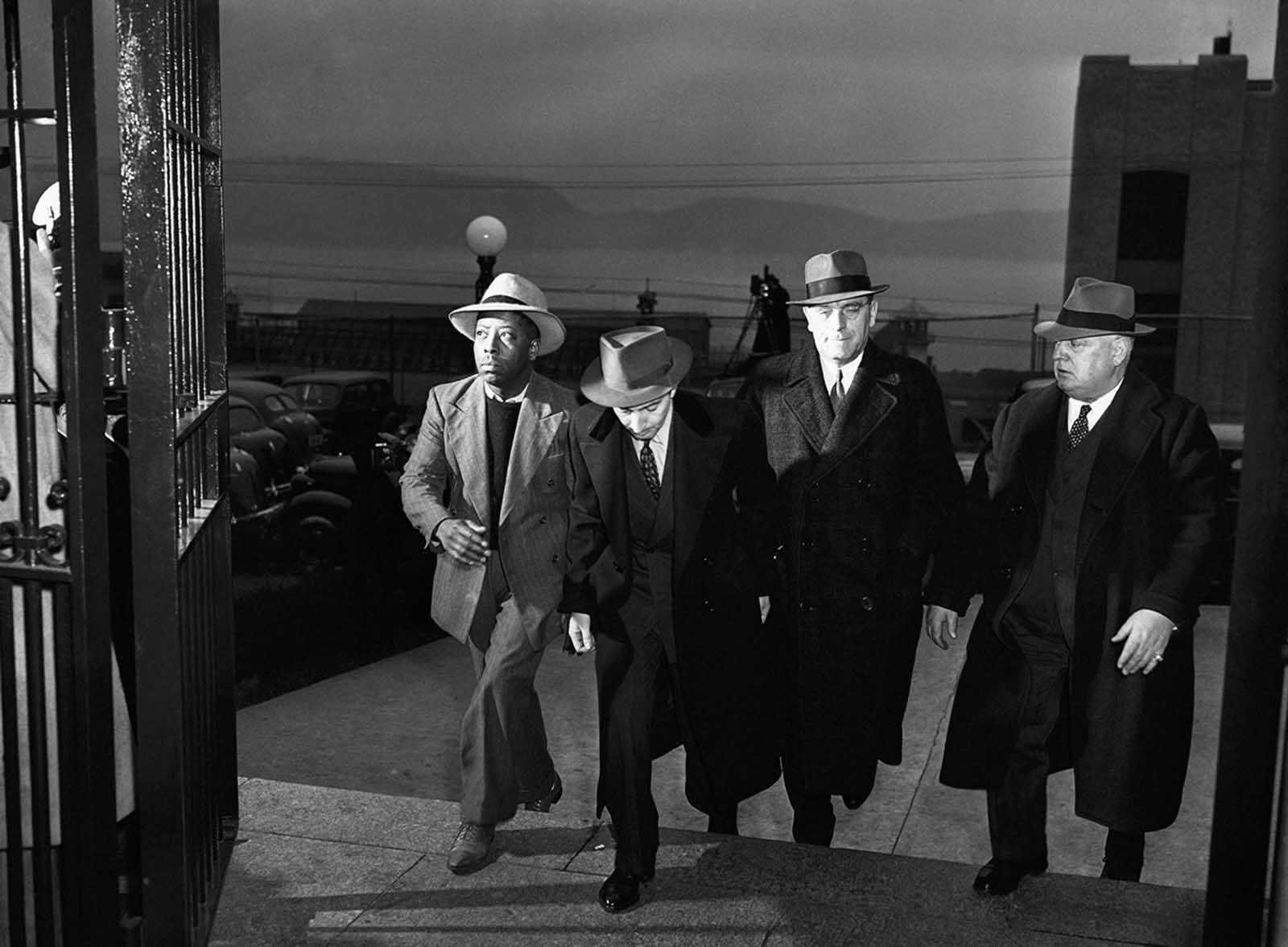The most notorious of these groups was the “German-American Bund”, which tried to model itself as an American arm of Hitler’s Third Reich. Although these groups wore uniforms and touted swastikas, in reality, they had few ties to Nazi Germany and their support among the larger German-American community was minimal. Nevertheless, the group strongly promoted hatred for Jews and strove to bring Nazi-style fascism to the United States. Initial support for American fascist organizations did come from Germany. In May 1933 Nazi Deputy Führer Rudolf Hess gave authority to German immigrant Heinz Spanknobel to create an American Nazi organization. Shortly thereafter the “Friends of New Germany” was created with help from the German consul in New York City. The organization was based in New York but had a strong presence in Chicago. The organization led by Spanknobel was openly pro-Nazi and engaged in activities such as storming the German-language New Yorker Staats-Zeitung with the demand that Nazi-sympathetic articles be published, and the infiltration of other non-political German-American organizations. Spanknobel was ousted as the leader and subsequently deported in October 1933 when it was discovered he had failed to register as a foreigner agent. The organization existed into the mid-1930s, although it always remained small, with a membership of between 5,000-10,000. Mostly German citizens living in America and German emigrants who only recently had become citizens composed its ranks. The organization busied itself with verbal attacks against Jews, Communists, and the Versailles Treaty. Until 1935 the organization was openly supported by the Third Reich, although soon Nazi officials realized the organization was doing more harm than good in America and in December 1935 Hess ordered that all German citizens leave the Friends of New Germany; also, all the group’s leaders were recalled to Germany. Not long after the Friends of New Germany fell out of favor with the Nazis and was dismantled, a new organization with similar goals arose in its place. Formed in March 1936 in Buffalo/New York and calling itself the German-American Bund or Amerikadeutscher Volksbund, the organization chose Fritz Kuhn as its Bundesleiter. The organization was soon filled with those calling themselves “Germans in America” and dreamed of the day when Nazism would rule the United States. Although they were instructed not to accept German citizens in their organization, they were not about to turn down anyone interested and many immigrants joined. It is estimated that around 25% of Bund members were German nationals—the rest being mostly first or second-generation Germans. The Bund soon began to hold rallies filled with swastikas, Nazi salutes, and the singing of German songs. The Bund created recreational camps such as Camp Siegfried in New York and Camp Nordland in New Jersey. It also established Camp Hindenburg in Wisconsin and the group met frequently in Milwaukee and Chicago beer halls. The Bund created an American version of the Hitler Youth that educated children in the German language, German history and Nazi philosophy. Although this organization tried to differentiate itself from the previously unsuccessful Friends of New Germany, the German Foreign Ministry commented that “In reality…they are the same people, with the same principles, and the same appearance”. The Bund began attracting the attention of the federal government in the summer of 1937 as rumors spread that Kuhn had 200,000 men ready to take up arms. During that summer an FBI probe of the organization was conducted but no evidence of wrongdoing was found. Later in 1938 Martin Dies of the House Un-American Activities Committee wildly proclaimed that Kuhn had 480,000 followers. More accurate records show that at the peak of his power in 1938 Kuhn had only 8,500 members and another 5,000 “sympathizers”. In February 1939 Kuhn and the Bund held their largest rally in Madison Square Garden—ironically, one which marked the beginning of the end for the organization. In front of a crowd of 22,000, flanked by a massive portrait of George Washington, swastikas, and Americans flags, Kuhn attacked FDR for being part of a Bolshevik-Jewish conspiracy, calling him “Frank D. Rosenfeld” and criticizing the New Deal, which Kuhn had deemed “the Jew Deal”. Three thousand members of the Ordnungsdienst, the militant arm of the Bund, were on hand and fistfights broke out in the crowd among those who had come to heckle Kuhn. After the rally, New York District Attorney Thomas Dewey arrested Kuhn on charges of larceny and forgery. He not only was convicted of these charges but he also confessed to being arrested multiple times for drunkenness, carrying on extra-marital affairs, and pocketing $15,000 from the Madison Square Garden rally. After the war, Kuhn was deported to Germany; he died there unceremoniously in 1951. Following Kuhn’s arrest, the Bund slowly withered away, until its dissolution on 8 December 1941, after the attack on Pearl Harbor. After the United States declared war on Germany, federal officials began to arrest Bund officials. Kuhn’s successor Gerhard Kunze was captured in Mexico and sentenced to 15 years of prison for “subversive activities”. In the end, the Bund of German immigrants held little power, if any, and often made average Americans less sympathetic to Germany, as the Bund’s extreme anti-Semitic and pro-Nazi views did not play well with the American public. Even Nazi Germany realized this and attempted to distance itself from the Bund. (Photo credit: Bettmann Archive / AP / Library of Congress). Notify me of new posts by email.
Δ Subscribe


























